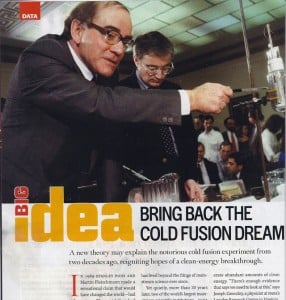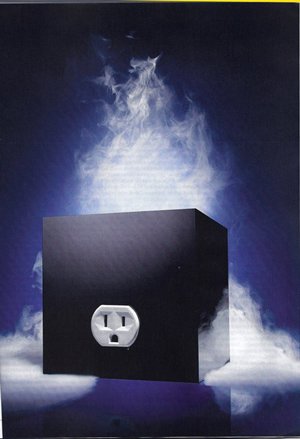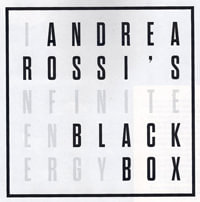The Technology Gateway and Spinoff Magazine by NASA
Congress mandates that NASA offer licensing of patented technologies to U.S. industry. NASA meets this requirement through the NASA Technology Gateway where LENR patent licensing opportunities are offered. NASA publishes Spinoff magazine annually, showcasing the technologies from previous years’ licensing process, and their benefits to industry.
The Technology Transfer and Partnership Program
A place to purchase LENR technology
Why is it important for Langley Research Center (LaRC) to transfer its technology?
“The U.S. Congress and the NASA Administrator are putting great emphasis on transferring NASA-developed technology and expertise to U.S. industry to increase U.S. industrial competitiveness, create jobs, and improve the balance of trade. In addition, there is an emphasis on bringing technologies and expertise into NASA that can facilitate achievement of space program goals.”
To purchase licensing agreements for LENR, go to the NASA Technology Gateway – link .
NASA Technologies Benefiting Society (Spinoff 2012-pdf pg 34)
Since its founding, NASA has been charged, not only with expanding humanity’s reach into space and its knowledge of the universe, but also with finding ways for the technology it develops to benefit the Nation and world. NASA research and development has tangible, secondary benefits beyond supporting mission needs—creating jobs, generating revenue for businesses large and small, reducing costs, and saving lives. Through software innovations, fuel-saving capabilities for small aircraft, healthy beverages at your local grocery store, and more—NASA spin-offs are improving daily life in your hometown and beyond.
The NASA Technology Gateway is for technologies in the applied engineering research phase entering the marketplace.
What patented LENR energy technology does NASA have to offer for licensing purchase?
Who is purchasing LENR technology at the Technology Gateway?
NASA and LENR Applied Engineering
Has LENR advanced to the applied engineering and product development phase? Yes.
At the Technology Gateway, NASA is promoting LENR power technology.
Langley’s Low-Energy Nuclear Reaction (LENR) Technology Available – NASA
“Check out our latest video on our homepage featuring a novel, clean energy technology.”
View the Promotional Video
Method for Enhancement of Surface Plasmon Polaritons to Initiate and Sustain LENR in MHS
(Metal Hydride Systems) – NASA
A quote from the end of the video: “NASA’s method for enhancement of surface plasmon polaritons to initiate and sustain low energy nuclear reactions in metal hydride systems, a clean nuclear energy for your power operated technology.”
MORE
These also provide evidence that LENR has advanced to applied engineering and product development.
- In the document “Low Energy Nuclear Reaction: The Realism and Outlook”—NASA links—Dennis Bushnell Chief Scientist at NASA Langley Research Center states that “We are still far from the theoretical limits of the weak interaction physics for LENR performance and are in fact inventing (in real time) the requisite engineering, along with verifying the physics.“
-
In this NASA contract, pdf- “Subsonic Ultra Green Aircraft Research – Phase II” – N+4 Advanced Concept – NASA Contract NNL08AA16B – NNL11AA00T, the Working Group report from May 2012 states:
“Even though we do not know the specific cost of the LENR itself, we assumed a cost of jet fuel at $4/gallon and weight based aircraft cost. We were able to calculate cost per mile for the LENR equipped aircraft compared to a conventional aircraft (Figure 3.2). Looking at the plots, one could select a point where the projected cost per mile is 33% less than a conventionally powered aircraft.”… pg 24.
-
LENR Requirements Analysis… pg 24. View Figure 3.1
-
Potential Heat Engines for LENR Systems… pg 25. View Figure 3.2
-
Parametric LENR and Heat Engine Performance Parameters… pg 25. View Figure 6.2
-
Low Energy Nuclear Reactor Technologies …pg 82.
-
LENR Technologies Success Criteria …pg 86.
-
Also LENR at pgs 15, 18, 19, 20, and 21.
-
The NASA Working Group Report also makes public the following list of organizations and individuals working on the advanced concept contract: Bradley (Boeing) * Daggett (Boeing) * Droney (Boeing) * Hoisington (Boeing) * Kirby (GT) * Murrow (GE) * Ran (GT) * Nam (GT) * Tai, (GT) * Hammel (GE) * Perullo (GT) * Guynn (NASA) * Olson (NASA) * Leavitt (NASA) * Allen (Boeing) * Cotes (Boeing) * Guo (Boeing) * Foist (Boeing) * Rawdon (Boeing) * Wakayama (Boeing) * Dallara (Boeing) * Kowalski (Boeing) * Wat (Boeing) * Robbana (Boeing) * Barmichev (Boeing) * Fink (Boeing) * Sankrithi (Boeing) * White (Boeing) * Gowda (GE) * Brown (NASA) * Wahls (NASA) * Wells (NASA) * Jeffries (FAA) * Felder (NASA) * Schetz (VT) * Burley (NASA) * Sequiera (FAA) * Martin (NASA) * Kapania (VT)
Thank you NASA, and a thank you to all of the people and organizations who worked on developing the NASA, “LENR equipped aircraft” – Advanced Concepts Working Group Report. Each of them are aware of the opportunities offered by patented LENR energy technology from NASA.
How much money might NASA make through the licensing of LENR technology?
THE NASA LENR ENERGY PATENT
The NASA LENR patent is for a device to produce heavy electrons thereby sustaining LENR and ensuing energy generation. In this slideshow, a Widom Larson theorist reviews the NASA patent. “NASA files USPTO patent application on LENRs” slideshow – by Lewis B. Larson.
View and research at Google Patent Search: Titled, “Method for Creating Heavy Electrons” or download the (pdf at lenr-canr.org)
Method For Creating Heavy Electrons – NASA LENR Patent
STATEMENT REGARDING FEDERALLY SPONSORED RESEARCH OR DEVELOPMENT [0002] The invention was made by an employee of the United States Government and may be manufactured and used by or for the Government of the United States of America for governmental purposes without the payment of any royalties thereon or therefor.
- BACKGROUND OF THE INVENTION [0003] 1. Field of the Invention [0004] This invention relates to the production of heavy electrons. More specifically, the invention is a method of making a device, the device itself a device, and a system using the device to produce heavy electrons via the sustained propagation of surface plasmon polaritons at a selected frequency.
- ABSTRACT A method for producing heavy electrons is based on a material system that includes an electrically-conductive material is selected. The material system has a resonant frequency associated therewith for a given operational environment. A structure is formed that includes a non-electrically-conductive material and the material system. The structure incorporates the electrically-conductive material at least at a surface thereof. The geometry of the structure supports propagation of surface plasmon polaritons at a selected frequency that is approximately equal to the resonant frequency of the material system. As a result, heavy electrons are produced at the electrically-conductive material as the surface plasmon polaritons propagate along the structure.
- [0019] A method for selective enhancement of surface plasmon polaritons to initiate and sustain low energy reaction in material systems, comprising the steps of: providing a material system comprising an electrically-conductive material, said material system having a resonant frequency associated therewith for a given operational environment; and forming a structure having a surface, said structure comprising a non-electrically-conductive material and said material system, said structure incorporating said electrically-conductive material at least at said surface of said structure, wherein a geometry of said structure supports propagation of surface plasmon polaritons at a selected frequency that is approximately equal to said resonant frequency of said material system, and applying energy to a portion of said structure to induce propagation of said surface plasmon polaritons at said portion, wherein heavy electrons are produced at said material system as said surface plasmon polaritons propagate along said structure.
- [0028] The above-described tuned structure -14- incorporating material system -12- can exist as particles, in two-dimensional geometries, three-dimensional geometries, and even fractal geometries. Several non-limiting examples will be discussed below.
- [0029] Individual particles, by themselves, are the simplest embodiment of a material system used by the present invention. Spherical or nearly spherical particles naturally resonate at a frequency where the particle circumference is equal to a multiple of the SPP wavelength. Similarly, long and thin, needle-like particles or whiskers can resonate in modes analogous to small antenna when the length of the particle is an integer multiple of one-half the SPP wavelength.
- [0030] Two-dimensional embodiments are comprised of periodic textures or arrayed structures that, by design, resonate at specific SPP frequencies. Examples include triangular, rectangular, or hexagonal arrays of posts (e.g., cylinders, truncated cones, or derivatives of these with more complex, non-circular bases) where the array of objects creates and reinforces a natural SPP resonance at the desired frequency either in the array elements themselves or on the surface in the voids between array elements.
- 0032] The advantages of the present invention are numerous. Devices/systems made in accordance with the present invention control the frequency of the SPP resonance and its uniformity over large surface or volume regions.
- This will allow an entire device to participate in heavy electron production and ensuing energy generation.
- The present invention is adaptable to a variety of physical states/geometries and is scalable in size…
- …thereby making it available for energy production in a wide variety of applications (e.g., hand-held and large scale electronics, automobiles, aircraft, surface ships, electric power generation, rockets, etc.)
In the Next Year or So, a NASA Spinoff LENR Report?
So, who is purchasing LENR technology from NASA at the Technology Gateway?
Spinoff Magazine will, at some time, report the LENR licensing agreements that are taking place.
When? Perhaps in next years’ edition, or so.
NASA… Spinoff… LENR…
Cold Fusion Now!
METHOD of SCIENTIFIC
Straighten…. untangling
Concept… bound
Better… yet
Always… found
Still.. questing




